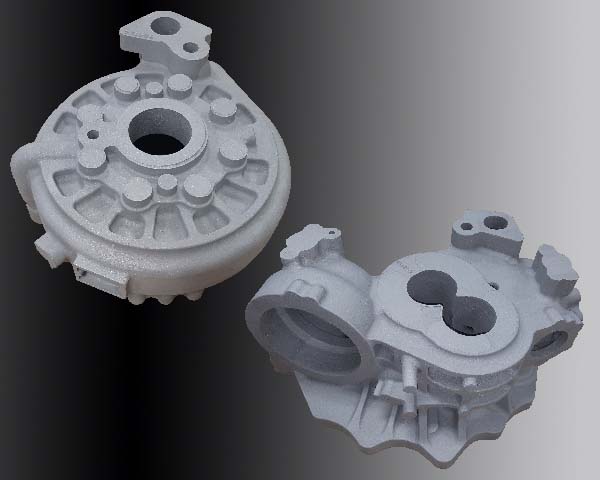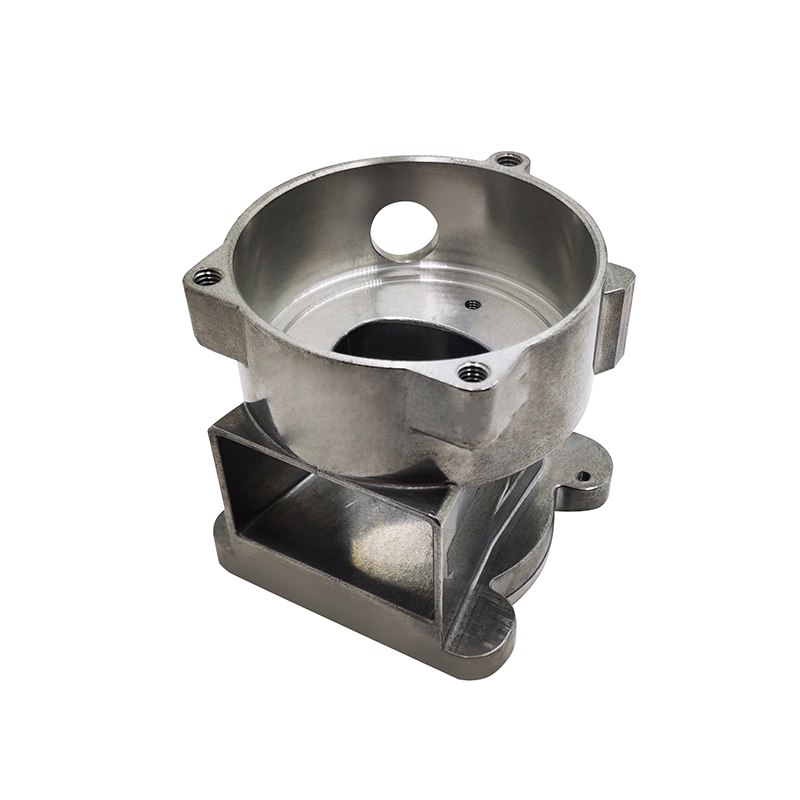Expert Walkthrough of aluminum casting from Start to Finish
Wiki Article
Aluminum Casting Explained: Key Realities and Insights for Market Professionals
Aluminum casting functions as an essential process in modern-day manufacturing, forming parts throughout various markets. Its diverse techniques, such as sand and die casting, deal with different manufacturing requirements. The unique residential properties of aluminum alloys enhance their applicability, yet tests remain in preserving top quality and effectiveness. Recognizing these elements is essential for market specialists. What are the newest advancements and finest techniques that can further enhance this procedure?Overview of Aluminum Casting Processes

Crucial element of aluminum casting procedures include the prep work of mold and mildews, which may be made from sand, metal, or ceramic materials, depending on the planned usage. Furthermore, temperature control is vital to ensure proper melting and solidification of aluminum.
The casting process enables complex layouts and can accomplish high levels of dimensional precision. When cooled, the castings might go through completing operations such as machining or surface area therapy to meet specific efficiency requirements. In general, aluminum casting offers as a functional production method, properly satisfying the varied demands of different sectors.
Kinds Of Aluminum Casting Techniques
In the domain name of aluminum casting, numerous techniques are employed to accomplish different outcomes. Sand casting techniques provide flexibility and cost-effectiveness for complicated shapes, while die casting procedures offer high accuracy and efficiency for automation. Understanding these methods is crucial for choosing the appropriate technique based on job demands.Sand Casting Methods
Sand casting strategies represent an essential technique in aluminum casting, where sand is made use of as a mold material to form liquified steel. This procedure involves producing a pattern from the wanted component, which is then placed in a sand blend to create a mold and mildew. The sand is compressed around the pattern, and after elimination, it develops a tooth cavity in the shape of the part. Molten aluminum is poured into this dental caries, permitting it to strengthen and cool down. One considerable benefit of sand casting is its flexibility; it can accommodate big parts and complicated shapes. Furthermore, the materials made use of are reasonably cost-effective, making it an easily accessible option for different manufacturing applications in the aluminum market.Die Casting Processes
Die casting procedures are a noticeable approach for shaping aluminum elements, using high-pressure strategies to compel liquified steel right into specifically crafted molds. This process is particularly favored for its capability to produce complicated forms with limited resistances and a smooth coating. There are 2 key kinds of die casting: hot chamber and cold chamber. Hot chamber die casting appropriates for metals with low melting factors, enabling faster manufacturing prices. Conversely, cool chamber die casting is excellent for higher melting factor steels, needing a separate melting furnace. Both techniques improve effectiveness and minimize material waste, making them important in automobile, aerospace, and customer products industries. Recognizing these processes helps specialists pick one of the most suitable technique for their details applications.Product Quality of Aluminum Alloys

Stamina and Sturdiness
Strength and longevity are vital attributes of aluminum alloys that make them appropriate for different casting applications. These products exhibit a beneficial strength-to-weight ratio, permitting for the creation of lightweight yet robust elements. With respect to tensile strength, particular aluminum alloys can be engineered to stand up to substantial loads without warping. This residential or commercial property is especially crucial in sectors such as aerospace and auto, where efficiency and safety and security are vital. In addition, aluminum alloys often retain their mechanical buildings under varied temperature level problems, ensuring consistent efficiency. The inherent ductility of these alloys likewise permits effective shaping during the casting process, making it easier to produce intricate geometries. In general, the stamina and toughness of aluminum alloys contribute significantly to their widespread use in innovative applications.Deterioration Resistance Characteristics
While aluminum alloys are valued for their strength and light-weight buildings, their deterioration resistance is one more important characteristic that boosts their viability for various applications. Aluminum normally forms a safety oxide layer when subjected to moisture, which aids to avoid additional oxidation. This fundamental home makes aluminum alloys specifically beneficial in atmospheres vulnerable to corrosion, such as commercial and marine setups. Furthermore, various alloy make-ups can affect resistance degrees, with particular alloys particularly engineered to improve this characteristic. Therapies like plating can even more enhance deterioration resistance by enlarging the oxide layer. Consequently, comprehending the corrosion resistance of aluminum alloys is essential for market professionals when choosing products for jobs calling for toughness and longevity in tough environments.Benefits of Aluminum Casting in Manufacturing
Aluminum casting deals countless advantages in manufacturing, making it a favored option for numerous industries. One considerable advantage is its light-weight nature, which adds to lowered transportation costs and enhanced power performance click resources in end products. Additionally, aluminum's superb thermal and electrical conductivity enhances functionality in applications needing warmth dissipation or electric transmission.The product's ability to be cast into intricate shapes permits design flexibility, decreasing the need for additional machining procedures. Additionally, aluminum casting displays remarkable rust resistance, causing longer item life expectancies and lower maintenance costs.

Common Applications of Aluminum Castings
The versatility of aluminum casting enables its prevalent use across various sectors. Common applications include auto components, where lightweight and corrosion-resistant parts, such as engine blocks and transmission housings, enhance automobile efficiency. In the aerospace sector, aluminum castings are used for structural elements, offering strength without adding considerable weight.
In addition, the electrical industry benefits from aluminum castings in producing rooms and warmth sinks, where thermal conductivity is necessary. The durable goods field additionally incorporates aluminum castings in products like cookware, furniture, and ornamental products, integrating aesthetics with functionality.
Furthermore, the building market utilizes aluminum castings for architectural aspects, window frameworks, and fixtures, which provide sturdiness and layout versatility. Overall, the varied applications of aluminum spreadings highlight their significance in modern-day manufacturing, adding to developments in effectiveness and item design throughout several fields.
Developments and Technical Developments
As sectors continue to advance, advancements in aluminum casting modern technology are changing manufacturing procedures and product abilities. Developments in 3D printing and additive manufacturing have allowed the production of complicated geometries that were previously difficult to achieve with typical techniques. These technologies enable rapid prototyping, lowering lead times and costs.Furthermore, improvements in mold and mildew design and products have actually enhanced the casting process by boosting performance and reducing waste. The assimilation of smart production strategies, such as IoT devices and real-time information analytics, allows for better tracking and optimization of production specifications, resulting in higher top quality outcomes.
Additionally, advancements in the original source aluminum alloys provide improved strength, deterioration resistance, and lightweight properties, providing to the growing needs in aerospace and automotive fields. Collectively, these technologies are not just improving efficiency however likewise satisfying the extensive requirements of contemporary design applications.
Ideal Practices for High Quality Control in Aluminum Casting
Making certain top quality outputs in aluminum casting calls for adherence to ideal methods that incorporate various phases of the production procedure. Comprehensive product evaluation is necessary to confirm the top quality of aluminum alloys utilized, as impurities can significantly influence the last product. Implementing precise melting and putting techniques lessens issues; preserving excellent temperatures avoids oxidation and advertises harmony.Additionally, mold design plays an important function; using computer-aided layout (CAD) can enhance accuracy and reduce human mistake. Normal tracking of the cooling process is critical to avoid warping and contraction. In addition, using non-destructive screening methods, such as ultrasonic or X-ray evaluations, helps identify inner problems without harming the components.
Developing a responses loophole with drivers and designers promotes continuous improvement, ensuring that quality control steps develop along with technological advancements. By following these finest methods, makers can enhance the integrity and efficiency of aluminum spreadings.
Regularly Asked Questions
What Are the Environmental Influences of Aluminum Casting?
The ecological impacts of aluminum casting include considerable power intake, greenhouse gas exhausts, and potential water air pollution from factory operations. In addition, bauxite mining for aluminum ore can bring about habitat destruction and dirt degradation.Just How Does Aluminum Casting Contrast to Other Steel Casting Procedures?
Aluminum casting commonly offers advantages in light-weight elements and corrosion resistance contrasted to other procedures, such as iron or steel casting, which might offer higher strength however result in much heavier and much less corrosion-resistant products. - Precision aluminum castingWhat Are Typical Problems in Aluminum Castings and Their Reasons?
Typical issues in aluminum castings include porosity, contraction, and additions. Causes often stem from incorrect putting techniques, poor mold and mildew design, or Read Full Article contamination of the molten steel, influencing the last item's honesty and efficiency.What Security Preventative Measures Should Be Taken During Aluminum Casting?
During aluminum casting, necessary safety precautions consist of putting on protective equipment, guaranteeing appropriate ventilation, preserving a tidy office, dealing with molten metal with treatment, and following established methods to reduce dangers of burns, breathing hazards, and mishaps.Just How Can I Improve the Performance of My Aluminum Casting Operations?
To boost performance in aluminum casting procedures, one should enhance mold and mildew design, streamline material handling, utilize automated procedures, perform regular upkeep on tools, and buy worker training to improve abilities and performance.Various approaches exist, aluminum casting encompasses several key processes that provide to different applications and demands. Trick aspects of aluminum casting processes consist of the prep work of mold and mildews, which may be made from sand, metal, or ceramic materials, depending on the planned use. Sand casting strategies stand for a fundamental technique in aluminum casting, where sand is used as a mold and mildew product to shape liquified steel. As sectors proceed to develop, innovations in aluminum casting innovation are changing manufacturing processes and item capacities. Guaranteeing premium outcomes in aluminum casting calls for adherence to best practices that incorporate numerous stages of the production procedure.
Report this wiki page